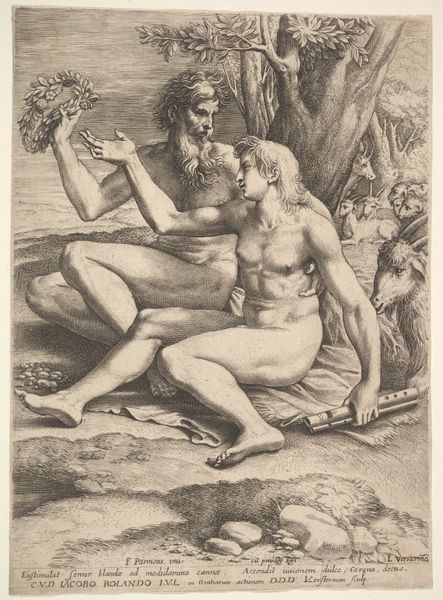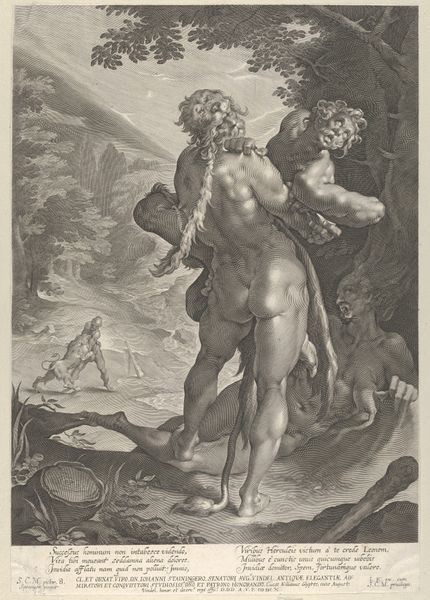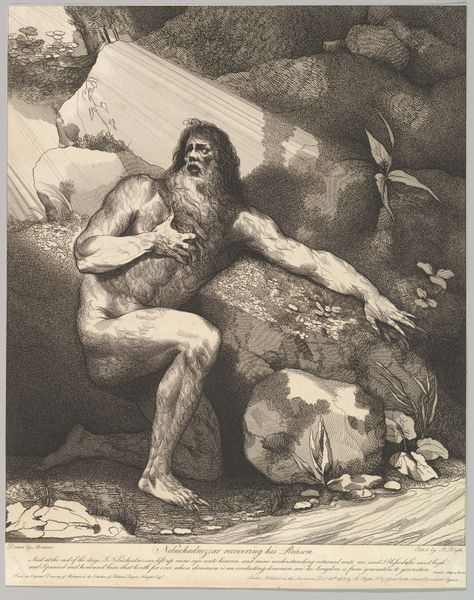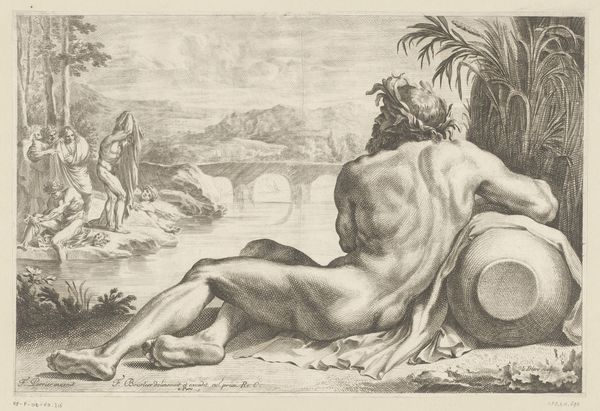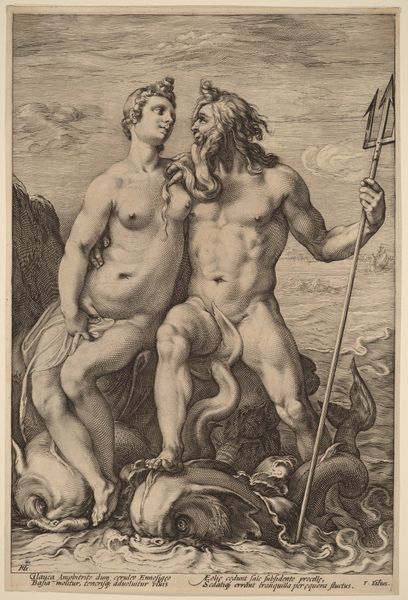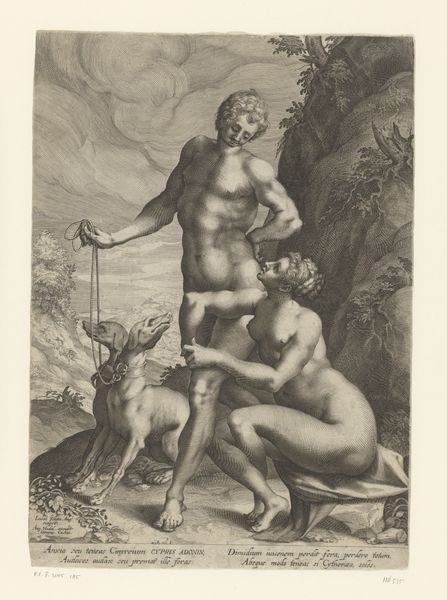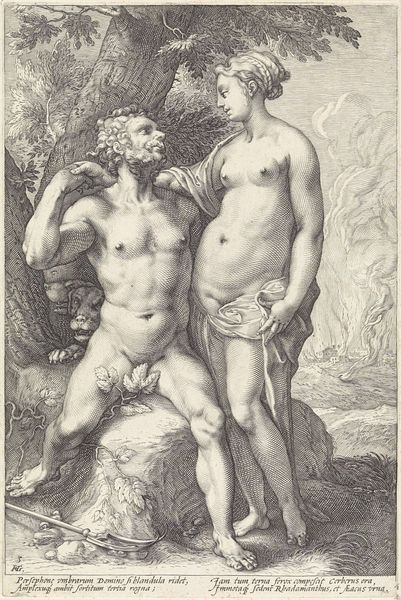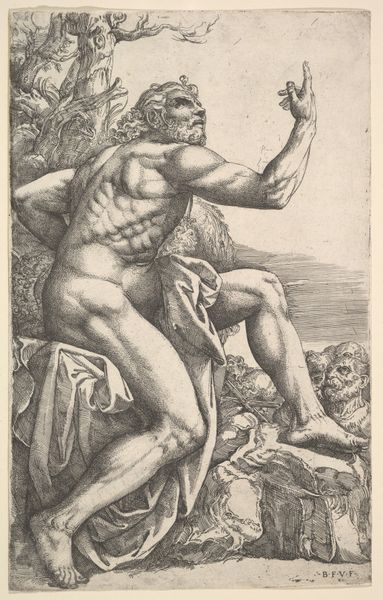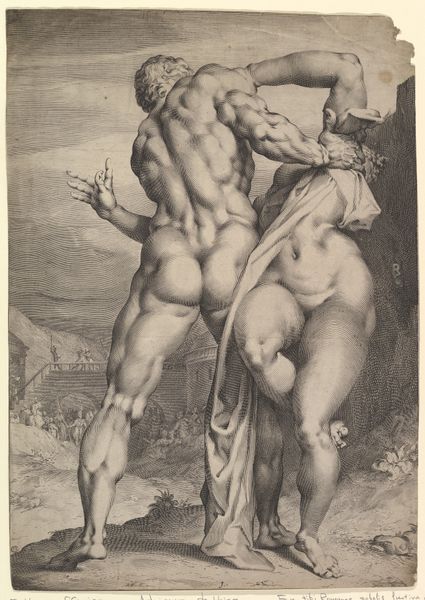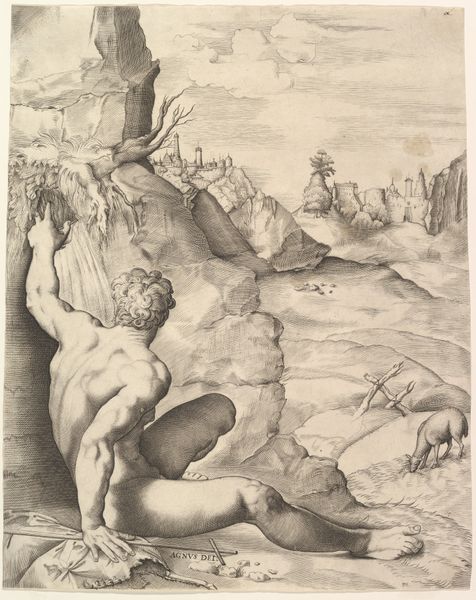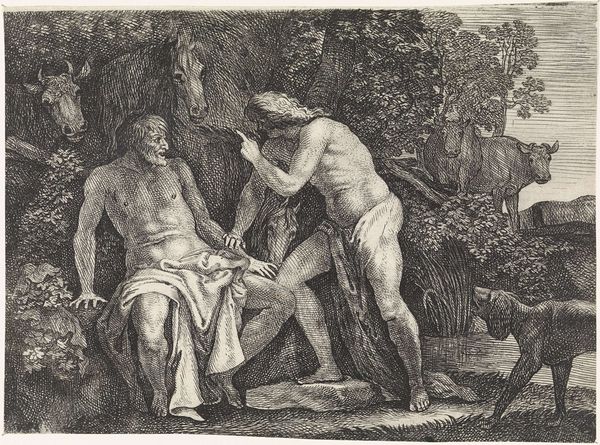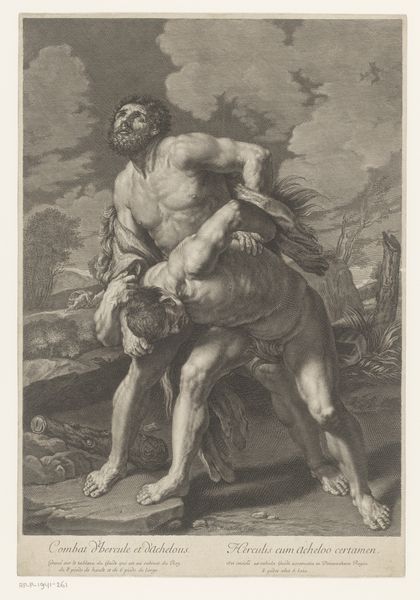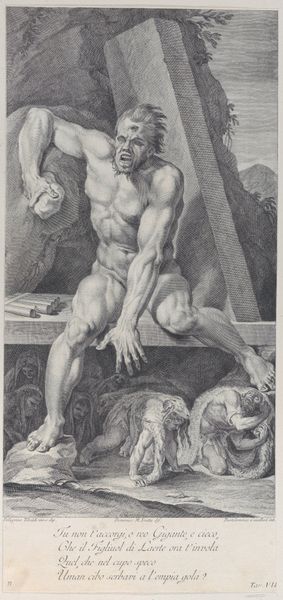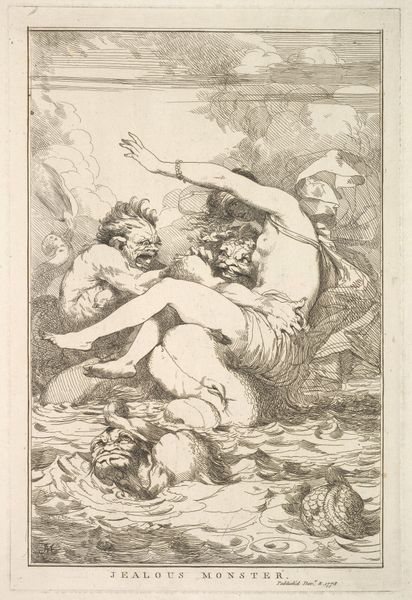
Dimensions: Sheet: 17 3/8 x 13 11/16 in. (44.1 x 34.7 cm)
Copyright: Public Domain
Robert Blyth created this engraving, "Don Quixote in the Sable Mountains," in the late 18th century. It portrays a nude Don Quixote, his armor discarded nearby, sitting pensively in a landscape, with Sancho Panza in the background. In Britain at this time, the print market thrived on both satire and literary themes. Blyth here draws on Cervantes' famous novel, but reinterprets it through the lens of the "sublime" – a popular aesthetic category of the period – which found a kind of awe and terror in natural scenes of immensity. Rather than illustrating a specific episode from the book, Blyth offers a Romantic vision of Quixote contemplating his own existence, stripped bare of his chivalric ideals. The nude figure, combined with the wild landscape, evokes a sense of vulnerability and introspection. It's a commentary, perhaps, on the futility of Quixote's quest in the face of an indifferent world. To better understand this, we can look to period literature, art criticism, and social history, to better understand the intellectual context out of which this image emerged. Through such research, art reveals its complex relationship with social and cultural values.
Comments
No comments
Be the first to comment and join the conversation on the ultimate creative platform.
